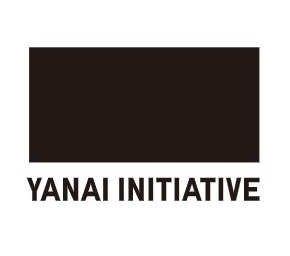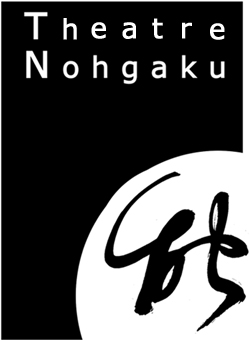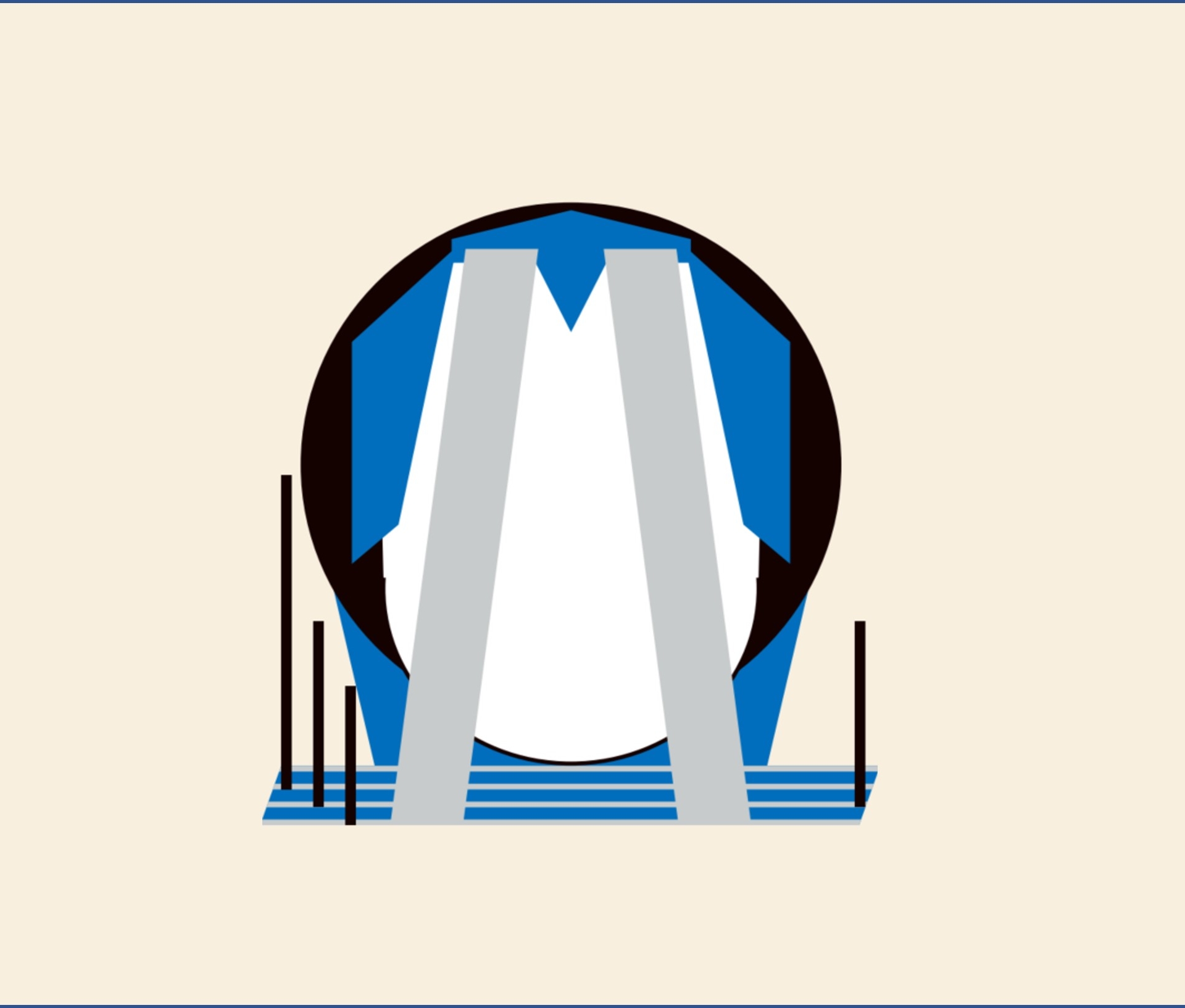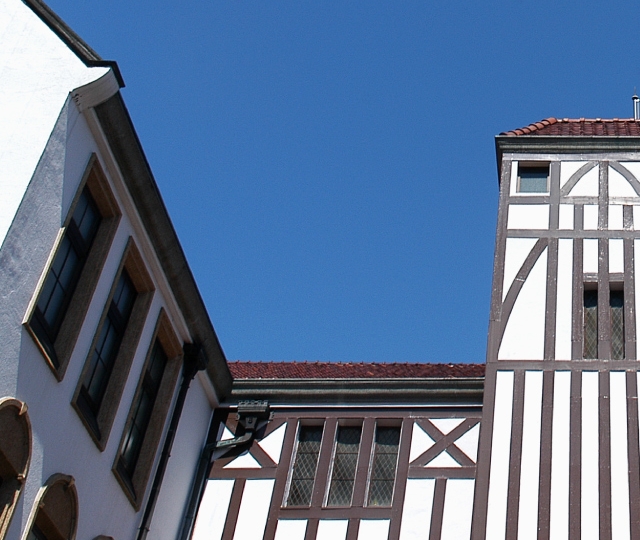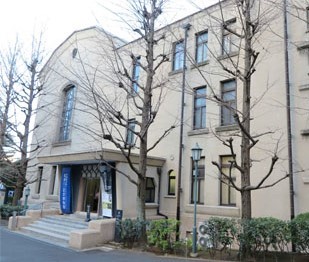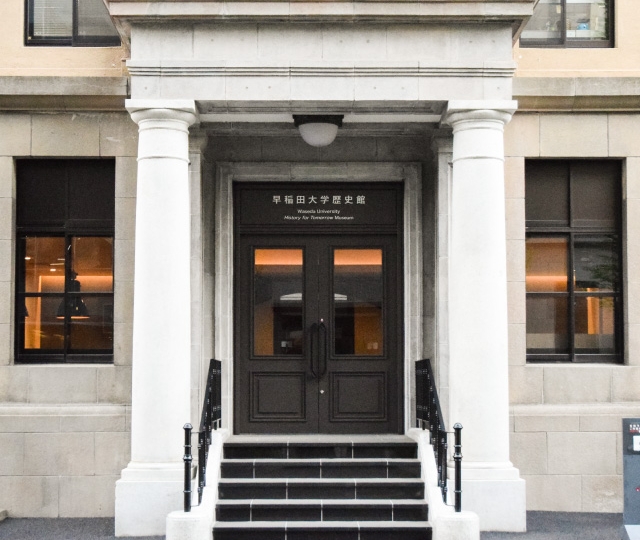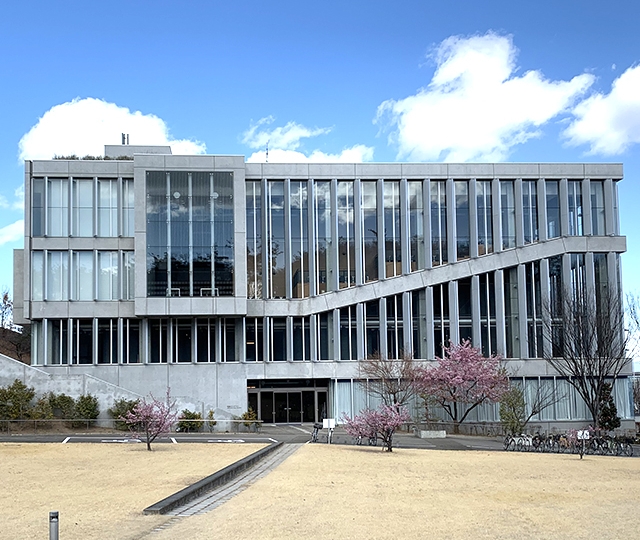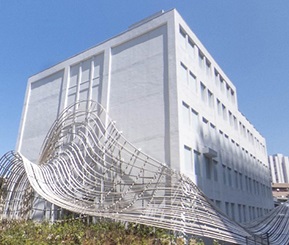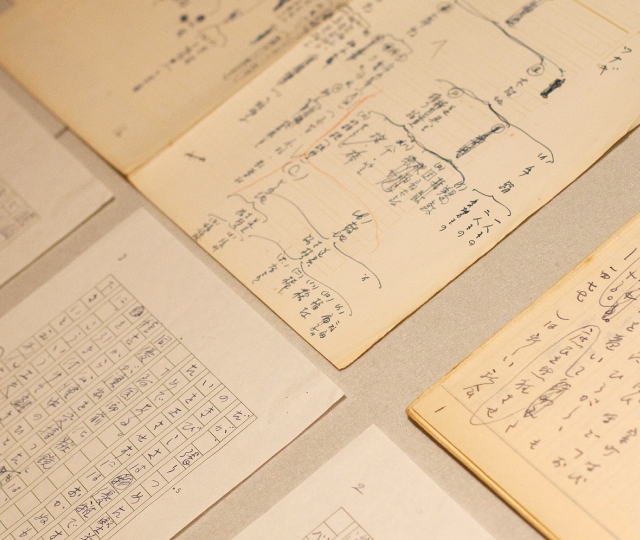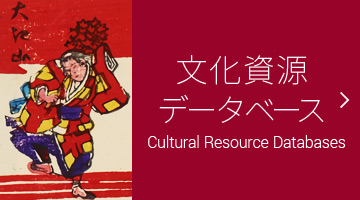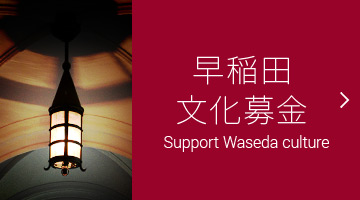- Featured Article
【Yanai Initiative】Four Days of English Language Noh “Blue Moon Over Memphis” PROGRAM (August 7 & 8, 2025)
Four Days of English Language Noh "Blue Moon Over Memphis" Program
Tue 01 Jul 25
Four Days of English Language Noh "Blue Moon Over Memphis" Program
Tue 01 Jul 25
Presented by The Yanai Initiative and Theatre Nohgaku.
*Day1
Thursday, August 7, 2025 6:30pm
Kita Noh Theatre [4-6-9 Kamioosaki, Shinagawa-ku, Tokyo]
*Day2
Friday, August 8, 2025 6:30pm
Kita Noh Theatre [4-6-9 Kamioosaki, Shinagawa-ku, Tokyo]
Program
■ Maibayashi Iwafune
■ Kyogen Quand on chante allongé [Horizontal Singing (Neongyoku)]
Break
■ Noh in English Blue Moon Over Memphis
* Maibayashi will be performed in Japanese and Kyogen in French and Japanese.
Synopsis
Maibayashi: IWAFUNE
An imperial envoy is sent by the emperor to the market where ships unload at Sumiyoshi Bay. There he sees a youth from another land carrying a treasure. The youth explains that it is a gift for the emperor for his benevolent reign. The youth reveals that he is the goddess Ama no Sakume who will guide a stone ship from heave to earth laden with treasures for the emperor and his people. The youth later appears as a dragon god to accompany the stone ship and bring it safely to harbor. The maibayashi performed here is the final dance of the play.
Kyogen: Quand on chante allongé
A master hears that his servant Taro Kaja is an excellent singer and asks him to sing for him. Taro Kaja, not wanting to sing, gives excuses saying he can only sing if he has some saké which the master agrees to give him. Then Taro Kaja gives another excuse saying he can only sing when his head is lying on his wife’s lap. The master tells to imagine his wife and offers his own lap and Taro Kaja reluctantly agrees. After Taro Kaja sings with his head on his master’s lap, the master orders him to sing sitting up but he can only sing in a raspy whisper. The master lifts and lowers Taro Kaja’s head who gets so involved in his singing that he forgets he is horizontal. The master chases Taro Kaja off scolding him for his deception.
Noh in English: BLUE MOON OVER MEMPHIS
Waki: Judy—an Elvis fan, 40 years old
Ai-kyogen: Oscar—the groundskeeper of Graceland
Maeshite: The Man—a black bluesman in his 40s
Nochishite: The ghost of Elvis as a young man
Act I
1. Waki (Judy) entrance:
To nanori-bue solo flute music, Judy enters and announces that it is the anniversary of Elvis’s death. She explains that she is from Cleveland and going to travel to Memphis to mourn Elvis’s death. She is planning to drive all night. She sings a travel song describing the rising moon, driving over the Black Hills, and seeing the Smoky Mountains as she sings melancholy love songs to the moon. Later she arrives at the graceful shrine of Graceland, once Elvis’s home and now his grave. She stands outside the Music Gate and lights a candle. Then sings of the Blue Moon shining over Graceland and the one who is gone.
2. Waki and Ai (Oscar) dialogue:
She asks Oscar, the groundskeeper, when will they open the gate and let them into the Meditation Garden. Oscar replies that there are just too many people. Judy protests that she came a long way to sit by Elvis’s grave just at the hour of his death. Oscar replies that no doubt she feels that she is special but so does everyone else. He tells her that she can enter tomorrow and pass quickly by the grave, but she cannot stop.
3. Unchained Melody Scene:
Judy protests that there were words she wanted to say to Elvis. The chorus sings the popular love song Unchained Melody, which was sung by Elvis Presley as well as many other popular singers. In it the singer pines for their lover.
4. Shite (The Man)/Waki dialogue:
The Man enters during the previous song and asks if it was Judy who was singing. He says that it is his favorite song because it brings out loneliness. He invites her into the Meditation Garden and she finds herself standing on Elvis’s grave. The chorus describes the marble grave, its eternal flame, Elvis’s emblem—a lightning bolt, and his motto, TCB—Taking Care of Business, saying that Elvis lies dead under this, yet he is still “taking care of business.”
5. Shite narration:
The Man tells Judy that there were many Elvises. With the chorus he tells of the white boy who sang like a negro, the boy who came from white trash, Elvis who mimicked preachers, Private Presley in the US Army, the star of many bad movies, and the Elvis who staged his own comeback. The chorus describes his voice softer than a kiss, his crooning of falling in love, his all night rocking and rolling, his swaying and swinging while singing gospel, and his leg twitching which brought out the National Guard. Called “the sensuous cyclone,” he threw scarves to the crowds and gave away cadillacs, while fans ripped his clothes and grabbed the rings from his fingers until he got tired of being famous and died from an overdose of drugs.
6. Shite departure:
Judy tells about the lonely Elvis and The Man says that Elvis is not buried here. The chorus for The Man sings of that Elvis that is in the hearts of lonely people who roam restlessly in the moonlight, in a candle lit at dinner for one, or in a radio playing all night in a darkened room. Then suggests that The Man is in fact that lonely Blue Moon boy. Judy asks him who he is, but the chorus sings how on the night of the blue moon the Man disappears.
Interlude
7. Ai narrative:
Oscar, the groundskeeper, enters and describes how there are 10,000 women in Graceland going wild thinking they have seen Elvis, and taking off their panties and throwing them in the air. He yells at them saying that Elvis is dead and that he buried him himself. He wonders what all the fuss is about saying that Elvis didn’t even write his own songs, and how he took voice quirks and dance moves from the black folks. Oscar claims that even he can twitch a leg and shake his hips but the women aren’t falling for him. He dances a short shagiri dance humorously imitating Elvis. Oscar tells how he thought Elvis would lose his popularity when he became fat, but women still went wild over him. He tells how he was glad when he died, but even then the women still go crazy over him. And they see him all over the country. He thinks the reason must be the Blue Moon. He gives up and yells out that Elvis just went downtown to get a box of jelly donuts and suggests they go and catch him. He leaves telling the women to put their pants back on.
Act II
8. Waki wait:
Judy sings describing how the night grows darker and the candle flames burn brighter as Elvis’s death hour draws near. She wonders if she is awake or dreaming. She sings of the moon turning everything blue and then sings quoting the lyrics from the song Blue Moon.
9. Nochishite entrance:
The ghost of Elvis enters and continues singing Blue Moon. Judy says she must be dreaming but Elvis tells her she is awake and at Graceland talking to Elvis. The chorus sings how Elvis has come to life again—a dream come true.
10. Nochishite/Waki exchange:
Elvis tells Judy that his life was a dream that he didn’t wake up from until he died. There is only dreams and loneliness in life and death. He sings that in life he had things to fill up his loneliness, but in death he can only hope to find something to fill his loneliness. The chorus and Elvis sing how the dead also walk in emptiness. Elvis tells Judy that she is a lonely soul who just sings love songs to the moon. He then tells how he gets so lonely. He dances the Dance of Loneliness.
11. Conclusion:
The chorus and Elvis sing, now that Elvis is dead, of wishing for the loneliness of life, of spending his death singing lonely love songs to the moon, and then describing the moon leaving the night sky like a one-night lover who leaves one’s bed leaving no trace. Judy says there is one thing she wanted to ask him. The chorus sings how the night comes to an end. Judy searches for words to say to Elvis, but turns to see that Elvis has disappeared in the morning mist.
Cast
Maibayashi: IWAFUNE
Shite
Oshima Kinue
Nohkan (Flute)
Richard Emmert
Kotsuzumi (Shoulder drum)
Sumikoma Mitsuhiko
Otsuzumi (Hip drum)
Kawauchi Takako
Taiko (Stick drum)
Sakurai Hitoshi
Chorus leader
Omura Sadamu
Chorus
Oshima Teruhisa
Kevin Salfen
Gary Mathews
Jubilith Moore
Matthew Dubroff
Kyogen: FUKURO
Shite
Ogasawara Hiroaki
Ado
Ogasawara Tadashi
Noh in English: BLUE MOON OVER MEMPHIS
Shite
Lluis Valls
Waki
Laura Sampson (8/7)
Mika Oskarson (8/8)
Ai
Ogasawara Hiroaki
Nohkan (Flute)
Richard Emmert
Kotsuzumi (Shoulder drum)
Sumikoma Mitsuhiko
Otsuzumi (Hip drum)
Kawauchi Takako
Chorus leader
David Crandall
Chorus
John Oglevee
Ashley Thorpe
Kevin Salfen
David Surtasky
Gary Mathews
Mika Oskarson (8/7)
Laura Sampson (8/8)
Matthew Dubroff
Koken
Oshima Kinue
Jubilith Moore
Libretto
Deborah Brevooet
Composition
Richard Emmert
Direction, Movement supervision
Matsui Akira
Collaborating artists
David Crandall
David Crandall is a composer, playwright, and performer. A founding member of Theater Nohgaku, he began his training at the Hosho Noh Theater in 1986 and worked professionally until 1991. He has written the text and music for the English language noh Crazy Jane and The Linden Tree, and the music for Zahdi Dates and Poppies. He has also composed instrumental pieces for the Tokyo Quintet and musicals for children.
Matthew R. Dubroff
Matthew R. Dubroff is founding member of Theatre Nohgaku and has been studying and performing noh for over 35 years. He is trained in all aspects of noh theatre and has performed both as an actor and musician.
He is a Professor of Theatre at Hampden-Sydney College in Virginia where he teaches and directs. He is the main teacher and organizer of the Noh Training Project – US, a 3-week intensive workshop, that occurs in the summer.
Richard Emmert
Richard Emmert is a professor emeritus of Musashino University. Certified Kita school noh instructor. Founder/past artistic director of Theatre Nohgaku. He has led numerous Noh performance projects outside Japan and composed, directed, and performed in English noh performances and Asian multi-cultural performances. He has also composed the music for the first French noh and arranged music for the first Spanish noh. He is the 2019 award winner of the Koizumi Prize for his work composing English noh.
Kawauchi Takako
Kawauchi Takako has studied and performed noh since 1986 and later went on to study ōtsuzumi, taiko, and kotsuzumi. She has also appeared abroad with Theatre Nohgaku in the English noh Blue Moon Over Memphis (2015), (2017), (2018), and Gettysburg (2019).
Gary Mathews
Gary Mathews studied ballet with Ronn Guidi, Founding Director of Oakland Ballet, then began training in noh with Richard Emmert in 2000. He is a Founding Member of Theatre Nohgaku. His training includes shimai and utai with Sadamu Omura, kotsuzumi with Mitsuo Kama and Kayu Omura, and otsuzumi with Eitaro Okura. He has performed in various productions including Pine Barrens (2006), Atsumori (2012), Hagoromo (2012), Sumida River (2015) and the various tours of Blue Moon Over Memphis.
Jubilith Moore
Jubilith Moore is a performer, director, teaching artist and producer for the theatre who has devoted her professional life to exploring the intersection of traditional Japanese and contemporary American theatre. She is a founding member of Theater Nohgaku. She has studied noh under Richard Emmert, Matsui Akira, Nomura Shiro, and Oshima Kinue and kyogen with Ishida Yukio and Yuriko Doi. She is the former artistic director of Theater of Yugen from 2001 to 2014.
Ogasawara Hiroaki
Ogasawara Hiroaki is an Izumi-ryu style Kyogen performer. He studied under the first head of Man-Kyogen, Nomura Man, as well as Nomura Manzo the 9th, and his father Ogasawara Tadashi. In 2017, he started the Atelier Oga Paris and has performed kyogen regularly in the Paris Ennen no Kai with his father. While inheriting tradition, his French activities allow him to explore new possibilities in Japanese culture from a global perspective.
Ogaswawara Tadashi
Ogaswawara Tadashi is Nohgaku Master in the Izumi-ryu style of Kyogen. An intangible cultural asse, he studied under the first head of Man-Kyogen, Nomura Man (Living National Treasure) as well as Nomura Manzo (deceased) the 8th, and Nomura Manzo the 9th. In additional to the classical repertory, he has appeared in new kyogen pieces and served as movement coach for TV dramas. He has performed frequently abroad, most notably in Paris.
John Oglevee
John Oglevee is a theater artist and noh practitioner. He is a licensed teacher of the Kita-ryu and a founding member of Theatre Nohgaku. He has participated in many Theatre Nohgaku tours and has taught noh workshops throughout Europe, North America and Asia. He currently lectures on noh and Japanese performance at Musashino University and Hosei University.
Omura Sadamu
Omura Sadamu is a shite-kata of the Kita school. He studied under Kita Minoru, the 15th head of the Kita school. Among the many noh that he has performed, he has performed in notable pieces including Okina, Dojoji, Shakkyo, Mochizuki, Motomezuka, Aya no Tsuzumi, Kinuta, Omu Komachi, and Sotowa-Gomachi. He has been designated an Important Intangible Cultural Asset. He is the sponsor of the Meikyoku Noh no Kai, Sadamu-kai and Minoru-Kai.
Oshima Kinue
Oshima Kinue is a Kita-ryū shite performer. A graduate of the Department of Japanese Music, Tokyo University of the Arts, as a child she studied under her Oshima Hisami and her father Oshima Masanobu. In addition to performing in Japan, she has performed abroad in several English-language noh, including Sumida River (2015), Between the Stones (2020) and Pagoda (2009) (2011). She teaches noh at several universities including Hijiyama University.
Oshima Teruhisa
Oshima Teruhisa is a shite-kata of the Kita-school and has been designated an Intangible Cultural Asset by the Japanese Ministry of Culture. He is a Fifth-generation noh performer and made his debut at the age of three dancing the shimai of Shojo. He has participated in numerous overseas tours of classical noh. In recent years he has been involved in ground breaking performances such as English language Noh, sign language Noh, as well as VR Noh and 3D Noh using cutting-edge technology. He continues to be actively engaged in activities that explore new possibilities for the performance of noh.
Mika Oskarson Kindstrand
Mika Oskarson Kindstrand is an actor and director based in Sweden. She began studying noh in 2017, performed in the English-language noh Emily in 2019 and joined Theater Nohgaku in 2020. As a child, she was exposed to Asian and Western theater through the World Theater Project and has performed in theater productions in Sweden and elsewhere.
Sakurai Hitoshi
Sakurai Hitoshi is a Komparu-ryū taiko performer and has been designated an Important Intangible Cultural Asset by Japan’s Ministry of Culture. He studied under Komparu Soemon, Mishima Gentaro, Oe Teruo, and Komparu Kunikazu. He regularly performs in Tokyo and has also appeared in several English noh including The Gull (2006), Crazy Jane (2007), and Pagoda (2009) (2011).
Kevin Salfen
Kevin Salfen is a musicologist, composer, film director, and producer. A member of Theatre Nohgaku, he is a professor of musicology at the University of the Incarnate Word in San Antonio, Texas. He has received awards from the National Endowment for the Arts for two major intercultural projects: the film Phoenix Fire and the performance/exhibition In a Memory Palace.
Laura Sampson
Laura Sampson is a vocal performer and storyteller-writer. Based in London, she began studying noh in 2011 and joined Theatre Nohgaku in 2014 appearing in Sumida River (2015), Emily (2019), Between the Stones (2020), and the French-language noh Medea (2023).
Sumikoma Mitsuhiko
Sumikoma Mitsuhiko is a Ko school kotsuzumi performer. He began studying kotsuzumi as a child with his father, Sumikoma Yukihide, and later with Sowa Masahiro. He is a graduate of the Japanese music department of Tokyo University of Arts. He performs and teaches in his home town of Kanazawa as well as in Tokyo. He has performed in numerous foreign performances of noh including in Germany and Italy. He presently teaches kotsuzumi at Tokyo University of the Arts. He has been designated an Intangible Culltural Asset by the Japanese Ministry of Cultural.
David Surtasky
David Surtasky is a photographer, stage artist, musician and Technical Director for Indiana University of Pennsylvania’s College. He is trained in Kita-ryu style. As a member of Theatre Nohgaku, he has participated in several productions including Pagoda (2009) (2011). His photographs have been published in a number of academic journals, magazines and books including Theater Topics Journal, Ricepaper Magazine, and Theater: Its Art and Craft..
Ashley Thorpe
Ashley Thorpe is a lecturer in the Department of Drama and Dance at Royal Holloway, University of London. A member of Theatre Nohgaku, he is co-founder and program director of the Noh Training Project UK. In addition to writing the original English language noh Emily (2019), he participated in the French language noh Medea (2023).
Lluis Valls
Lluís Valls joined Theatre of Yugen in 1993, acting and assistant directing for Yuriko Doi. He became co-Artistic Director from 2002–08, and currently serves as the Lead Artist and Director of their Kyogen Company. He has studied Izumi Kyogen with Yukio Ishida and Go Iida; Kita Noh with Richard Emmert, Akira Matsui, and Teruhisa Oshima. In 2002 Lluis co-founded Clowns on a Stick, creating short and long form clown pieces. .
Deborah Brevoort
Deborah Brevoort is a writer of plays, musicals, and opera. Her work “The Women of Lockerbie” has been produced many times internationally. Her comedies and dramas have been shown in theatres across the US. In 2023, she received the Campbell Opera Librettist Award from Opera America.
Kitazawa Hideta
Kitazawa Hideta is a wood sculptor and noh mask maker. He learned traditional wood carving from his father, Kitazawa Ikkyo, and currently produces many noh and kyogen masks in addition to commissioned shinsaku “new” masks. In addition for both Blue Moon Over Memphis and Oppenheimer, he has carved many noh masks for Theater Nohgaku, including for Crazy Jane, Gettysburg, and Sumida River. A book on his work entitled Noh and Kyogen Masks has been published by Prestel in autumn 2024.
Allan West
Allan West is an artist employing traditional Japanese brush and pigment technique to a variety of both contemporary and traditional style work. After studying painting in the United States, he studied traditional Japanese painting at Tokyo University of the Arts, and in 1999 opened his gallery and studio, “Edokoro Allan West,” in Yanaka, Tokyo. He creates a variety of works, including folding screen paintings, sliding door paintings, and hanging scrolls. In Blue Moon Over Memphis, he created the nakahikari (a type of fan) used by the shite.
Matsui Akira
Matsui Akira is a Kita-ryū shite performer and holds the designation of Important Intangible Cultural Asset. He has actively taught and performed noh both in Japan and abroad, and collaborated with performers in numerous productions worldwide. In 2016, for his vast international activities he was awarded an honorary doctorate from Royal Holloway, University of London. In 2018, he was awarded the Regional Cultural Meritorious Individual Award by the Agency for Cultural Affairs, Government of Japan.
- Related booklet
-
-
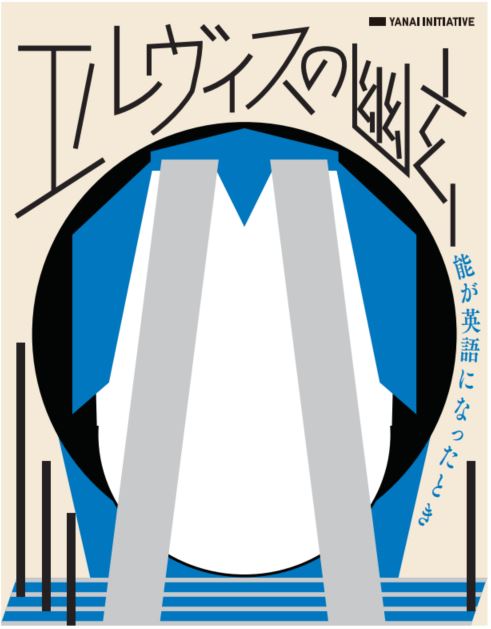
エルビスの幽玄 - 能が英語になったとき(The Yūgen of Elvis—Performing Noh in English)
A publication accompanying the English noh performance.
Blue Moon Over Memphis: Deborah Brevoort’s complete English text with Japanese translation along with explanations of the highlights of the music, costumes and masks as well as accompanying photos.
A volume revealing English noh and the background to the creation of Blue Moon Over Memphis.Editorial Supervision: Yanai Initiative
Language: Japanese
Specifications: 223mm x 174mm, soft cover, 120 pages (in color)
Price: 2,200 yen (with Tax)
Contents:
・What is English Noh—Beyond Culture and Language (Dialogue between Richard Emmert and Narita Minako)
・Articles by the author and performers of Blue Moon Over Memphis.
・Explanations of the music, costumes and masks of Blue Moon Over Memphis.
・Round-table Discussion: Noh in the World—Noh and Its Possibilities as a Global Theatre
・Essays: What is Noh? (Takemoto Mikio) / Thoughts on English Noh (Kodama Ryuichi)
-
Theatre Nohgaku
Theatre Nohgaku is a collective of artists committed to sharing the art of Nohgaku with global audiences. While during Nohgaku’s nearly 700 year history it has predominantly been performed in Japanese, we feel that the form of Noh is structured in a way that it transcends language and speaks to the human soul. Noh’s sparsity offers audiences a way to engage with challenging themes.
Yanai Initiative
Thanks to the donation from Mr. Tadashi Yanai (Chairperson, President and CEO, Fast Retailing Co. Ltd.), the Yanai Initiative has launched in 2014 as a joint collaborative project under Waseda University and the University of California, Los Angeles, aiming for transmission and propagation of the Japanese humanities.
Starting from 2020 Spring, we have reinforced our management structure for expanding its activities, specifically, providing academic symposia, introducing the Japanese traditional culture and the events that combines video, literature, and music. Furthermore, building the website as the research data repository that integrate useful information for researchers, also being providing information or impressive events in this field that beyond the general concept of Japanese humanities.
